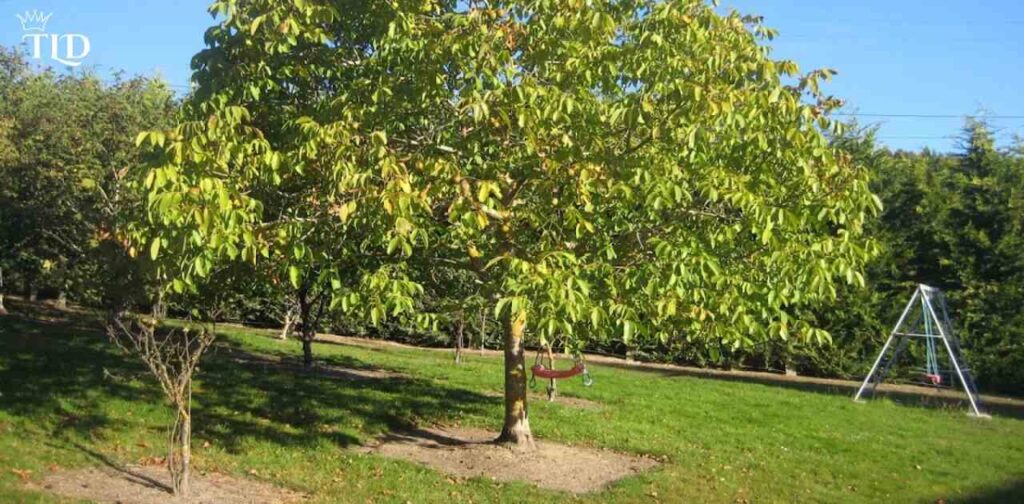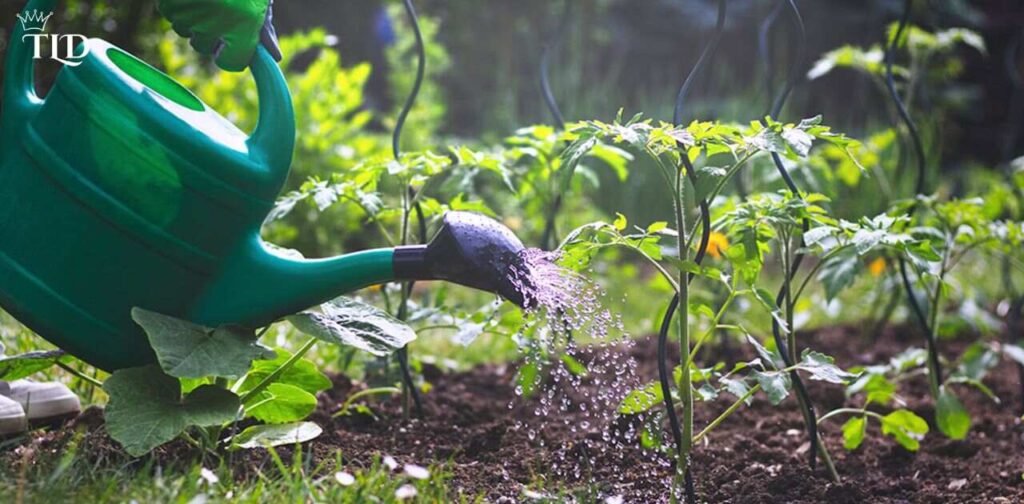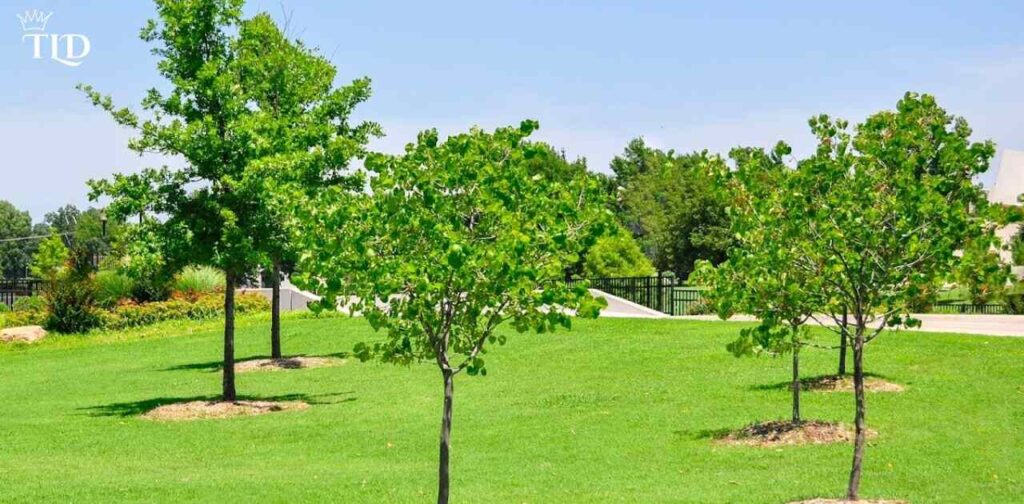Integrating a walnut tree amidst the gardens brings more than just beauty; it offers a unique combination of shade, structure, and sustainability. These majestic trees, known for their sprawling canopies and delicious nuts, are ideal for gardeners who want to enrich their garden’s diversity and aesthetic appeal. But growing a walnut tree in your garden involves more than just planting a sapling. This in-depth guide covers everything from choosing the right walnut variety and planting techniques to caring for and maintaining your tree, so it thrives for generations.
Why Choose a Walnut Tree Amidst Your Garden?
Walnut trees, whether the English (Juglans regia) or the Black Walnut (Juglans nigra), offer a range of benefits for gardens. Not only do they enhance the garden’s landscape with their grand stature, but they also provide shade, improve soil health, and produce a bounty of nutritious nuts.
Unique Characteristics of Walnut Trees
Walnut trees have distinct characteristics that make them an attractive addition to any garden:
- Height and Spread: Depending on the variety, walnut trees can grow between 60-100 feet in height with a spread of up to 50 feet. This large size makes them suitable for spacious gardens.
- Leaves and Seasonal Changes: The leaves of walnut trees are large and compound, with a bright green color in spring and summer, turning to gold in the fall. This transformation adds seasonal interest to the garden.
- Growth and Lifespan: Walnut trees grow at a moderate rate, reaching maturity in 10-15 years, and can live for over 200 years, providing a long-lasting addition to the landscape.
- Varietal Adaptability: English walnuts are preferred for their thin shells and tasty nuts, while black walnuts are known for their strong wood and adaptability to different soil types.
Benefits of Having a Walnut Tree in Your Garden
Adding a walnut tree amidst the gardens offers numerous advantages, including visual appeal, environmental contributions, and practical benefits.
- Aesthetic Appeal and Landscaping Benefits:
- The grand size and lush foliage of walnut trees make them a natural focal point in any garden design.
- Their canopies provide cool, dappled shade, ideal for creating seating areas or a retreat from the summer heat.
- The trees’ textured bark, broad leaves, and dramatic height offer a textural contrast to other garden elements.
- Environmental Benefits:
- Walnut trees help clean the air by absorbing pollutants and releasing oxygen, contributing to a healthier garden environment.
- The deep roots of walnut trees help stabilize the soil, reducing erosion and improving water retention.
- They provide a habitat and food source for wildlife, supporting biodiversity by attracting birds, squirrels, and beneficial insects.
- Practical Benefits for Homeowners:
- Harvesting Walnuts: Walnuts are a rich source of healthy fats, antioxidants, and proteins. Freshly harvested walnuts can be used in cooking, baking, or enjoyed as a healthy snack.
- Economic Advantages: Over time, mature walnut trees produce high-quality wood that is highly sought after for furniture, flooring, and crafts, providing potential economic value.
How to Plant a Walnut Tree Amidst Your Garden
Planting a walnut tree requires careful planning to ensure it thrives and complements the surrounding garden.
Choosing the Right Location for Your Walnut Tree

Choosing the right spot for your walnut tree is crucial to its long-term success. Here are several key factors to consider:
| Factor | Description |
|---|---|
| Sunlight | Walnut trees need full sun, ideally 6-8 hours of direct sunlight per day, to produce healthy growth and nuts. |
| Soil Type | They prefer well-drained, loamy soils with a neutral to slightly acidic pH (6.0 to 7.5). Avoid heavy clay or waterlogged soils. |
| Space | Walnut trees require plenty of space to accommodate their expansive root systems and broad canopies. Keep them at least 40-50 feet away from structures and other trees. |
| Wind Exposure | Young walnut trees can be damaged by strong winds. Plant in a location that is sheltered from prevailing winds. |
| Proximity to Other Plants | Be mindful of juglone sensitivity in nearby plants. Juglone is a natural compound produced by walnut trees that can inhibit or even kill some plants. |
Step-by-Step Guide to Planting a Walnut Tree
- Prepare the Soil:
- Test the soil’s pH level to ensure it is within the preferred range of 6.0-7.5. Amend the soil with compost or organic matter to improve drainage if necessary.
- Clear the planting area of weeds and grass to reduce competition for nutrients.
- Select and Prepare the Walnut Sapling:
- Purchase a walnut sapling from a reputable nursery. Look for saplings that are one to two years old, as they are more likely to establish well in a garden setting.
- Before planting, soak the roots of the sapling in water for several hours to ensure they are well-hydrated.
- Planting Techniques and Early Care:
- Dig a hole that is twice as wide and the same depth as the root ball of the sapling. This allows room for the roots to spread out.
- Place the sapling in the hole, ensuring it is straight and the root collar (where the roots meet the trunk) is level with the ground.
- Backfill the hole with soil, firming it down gently to remove air pockets. Water thoroughly to settle the soil.
- Apply a 3-4 inch layer of organic mulch, such as wood chips or straw, around the base of the tree to help retain moisture and suppress weeds. Keep the mulch away from the trunk to prevent rot.
Companion Planting and Walnut Tree Compatibility
Companion planting can help enhance the health and productivity of a walnut tree, but it’s important to be aware of juglone toxicity, which affects certain plants:
- Compatible Plants:
- Black raspberries, beans, beets, carrots, and onions are generally resistant to juglone and can thrive near walnut trees.
- Non-Compatible Plants:
- Plants sensitive to juglone include tomatoes, potatoes, apples, and pine trees. It’s best to keep these plants at least 50-60 feet away from a walnut tree.
Tip: Create raised beds or use containers for juglone-sensitive plants to prevent their roots from coming into direct contact with the tree’s root zone.
Caring for Your Walnut Tree Amidst the Gardens
Once planted, walnut trees require regular care and maintenance to ensure they grow healthy and strong.
Watering, Fertilizing, and Mulching Tips

- Watering:
- Newly planted walnut trees require regular watering to establish their root systems. Water deeply once a week during dry periods, ensuring the soil stays moist but not soggy. Established trees are more drought-tolerant but still benefit from watering during prolonged dry spells.
- Fertilizing:
- Apply a balanced fertilizer (such as a 10-10-10 NPK formula) in early spring to promote vigorous growth. For mature trees, a single annual application is usually sufficient. Avoid over-fertilizing, as this can lead to excessive leaf growth at the expense of nut production.
- Mulching:
- Mulch around the base of the tree helps retain moisture, regulate soil temperature, and prevent weed growth. Organic mulch, like shredded bark or compost, decomposes over time and enriches the soil. Reapply mulch annually to maintain a 3-4 inch layer.
Pruning and Maintenance
Regular pruning is essential for maintaining the health, shape, and productivity of your walnut tree: Is Home Depot pressure-treated lumber safe for vegetable gardens?
- Pruning Tips:
- Prune walnut trees in late winter or early spring before new growth begins. Remove any dead, diseased, or damaged branches to improve airflow and reduce the risk of pest infestations.
- Thin out crowded branches to allow sunlight to penetrate the canopy, which promotes healthy leaf and nut development.
- Shape young trees by selecting a central leader (main vertical stem) and removing competing branches to encourage strong, balanced growth.
- Common Pests and Diseases:
- Pests: Watch for pests like aphids, walnut husk flies, codling moths, and caterpillars. These can damage leaves, nuts, and young shoots. Use organic insecticides, and horticultural oils, or introduce beneficial insects like ladybugs to control infestations.
- Diseases: Walnut blight, caused by a bacterial pathogen, is one of the most common diseases affecting walnut trees. It manifests as black spots on leaves, shoots, and husks. Prune infected branches and use copper-based fungicides to manage outbreaks.
Harvesting and Storing Walnuts
Harvesting walnuts is a rewarding process, but it requires attention to timing and technique to ensure the best quality nuts.
- Identifying the Right Time for Harvest:
- Walnuts are ready for harvest when the green outer husks begin to split and the nuts inside start to fall naturally. This typically occurs in late summer to early fall, depending on the climate and tree variety.
- Methods for Harvesting Walnuts Safely:
- Manual Harvesting: Shake the branches gently with a pole or by hand to dislodge ripe nuts. Collect fallen nuts promptly to prevent spoilage or mold.
- Mechanical Harvesting: For larger gardens or small orchards, consider using a mechanical shaker or nut harvester to save time and effort.
- Proper Storage Techniques:
- After harvesting, remove the green husks to expose the hard shell. Dry the nuts in a well-ventilated area for 2-3 weeks, turning them regularly to ensure even drying.
- Once dried, store walnuts in a cool, dry place. Refrigerate or freeze in airtight containers for long-term storage to maintain freshness.
Overcoming Challenges When Growing Walnut Trees in Gardens
Growing a walnut tree amidst the gardens comes with unique challenges, but understanding common issues and their solutions can help ensure success in how to grow a walnut tree.
Common Walnut Tree Issues and Solutions
- Managing Juglone Toxicity:
- Juglone, a natural chemical produced by walnut trees, can inhibit the growth of certain plants. To manage this, choose juglone-resistant companion plants and avoid planting sensitive species near the tree.
- Dealing with Pests and Diseases:
- Regularly inspect the tree for signs of pests like aphids, scale, and walnut husk flies. For diseases such as walnut blight, prune infected areas and apply appropriate treatments.
- Protecting Young Trees from Weather Extremes:
- Young walnut trees are vulnerable to extreme weather conditions, such as frost and strong winds. Use burlap or protective wraps during cold months, and provide windbreaks or supports as needed.
Case Study: A Walnut Tree’s Impact on a Home Garden

Consider the example of Sarah, a gardening enthusiast from Oregon, who planted a walnut tree amidst her flower and vegetable garden five years ago. Despite initial concerns about space and juglone toxicity, Sarah carefully selected plants compatible with walnut trees, like black raspberries and beans. Over the years, the walnut tree provided shade, boosted biodiversity, and even improved soil health due to its deep roots. “It’s the centerpiece of my garden now,” Sarah shares, “and the nuts are a fantastic bonus!”
Inspirational Ideas for Designing a Garden with a Walnut Tree
A walnut tree can be more than just a shade provider; it can be the heart of a creative garden design.
Walnut Trees as Focal Points
To make a walnut tree a central feature of your garden:
- Positioning: Plant the tree in a visible location, such as the center of a lawn or at the end of a pathway. Use garden structures like arches or trellises to frame the tree and draw the eye.
- Lighting: Install garden lights around the base or in the canopy to highlight the tree’s structure and create a dramatic nighttime effect.
Integrating Walnut Trees with Other Garden Elements
Combine walnut trees with other features to enhance your garden’s design:
- Create Shaded Seating Areas: Position benches, hammocks, or swings beneath the tree to create cozy, shaded spots for relaxation.
- Plant Shade-Tolerant Flowers and Shrubs: Grow plants like hostas, ferns, or shade-loving perennials under the canopy to add color and texture to the shaded areas.
Seasonal Decor and Activities Around a Walnut Tree
Use your walnut tree as a hub for seasonal decorations and family activities:
- Decorations: Hang festive lights, ornaments, or bird feeders from the branches to celebrate different seasons or holidays.
- Activities: Host picnics, outdoor tea parties, or storytelling sessions under the tree. The tree’s shade and beauty create a natural setting for gatherings.
Conclusion
Planting a walnut tree amidst the gardens can transform your outdoor space, providing shade, beauty, and a harvest of healthy nuts. With careful planning, regular maintenance, and a little creativity, your walnut tree will become a treasured part of your landscape for years to come.
Whether you’re a seasoned gardener or a beginner, consider adding a walnut tree to your garden to enjoy its many benefits. Don’t hesitate to share your gardening experiences or ask questions in the comments below!
FAQs About Walnut Trees in Gardens
How fast do walnut trees grow?
Walnut trees grow at a moderate pace, typically adding 1-2 feet per year until they reach maturity.
Can walnut trees thrive in any climate?
Walnut trees prefer temperate climates with cold winters and warm summers. They grow best in USDA zones 5-9.
What should I avoid planting near a walnut tree?
Avoid planting juglone-sensitive plants like tomatoes, potatoes, apples, and azaleas near walnut trees.











